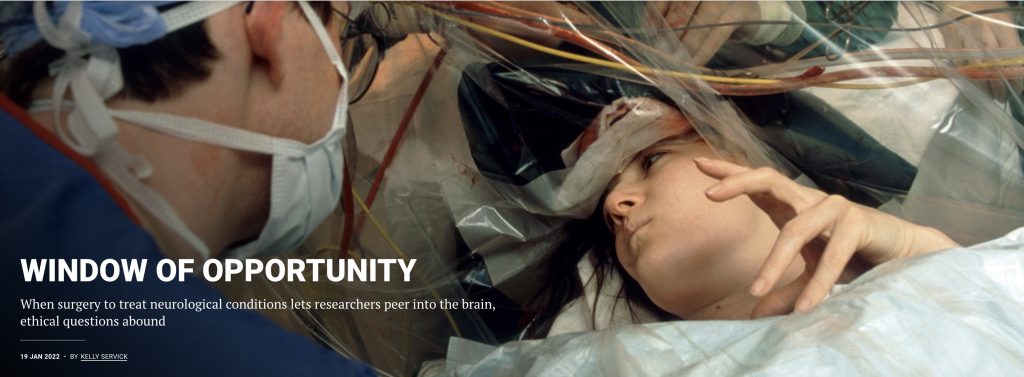Great new article in Science Magazine about the unique Neuroscientific opportunities that regular neurosurgical practice can provide!
People who take part in these intracranial studies—often during epilepsy monitoring or brain surgery performed when the patient is awake—are giving an invaluable gift. Noninvasive methods of studying brain function such as functional magnetic resonance imaging and electroencephalography can give you good spatial resolution or good temporal resolution, but not both. But a fine wire placed in contact with brain tissue can detect the activity of neurons with precision on the scale of millimeters and milliseconds. And researchers can relate that activity with a person’s real-time report of the experience.
Interested to read more? Prof. Dr. Dirk de Ridder wrote a blogpost for our website on this synergy between Neurosurgery and Neuroscience.
